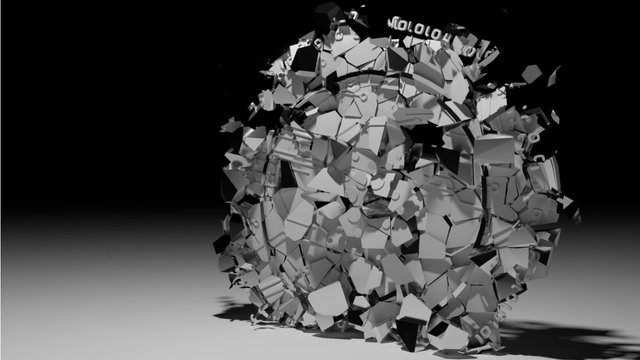The Blockchain Handbook - Chapter 7: Cardano (ADA)
Cardano is a blockchain platform launched by Ethereum co-founder Charles Hoskinson, a result of his partnership with the Cardano Foundation, along with Input Output Hong Kong (IOHK) and Emurgo. It's a decentralized, open-source project that, while established in 2015, didn't rise to any prominence until 2017, when ADA Coin, the cryptocurrency it supports, officially launched. At present, the market cap of ADA is $9,503,386,216, and the value is $0.366543, equivalent to roughly 0.00004265 BTC.

Designed with the goal of becoming the "most complete and most useful cryptocurrency ever constructed," Cardano has jumped to the spot of fifth-most valuable cryptocurrency in existence and 24th in volume at $230,788,000, experiencing a major boom around the beginning of 2018 that saw its worth jump some 1,520 percent. At the time of writing, ADA Coin's circulating supply rests at 25,927,070,538 ADA, with a total supply of 31,112,483,745 ADA and a max supply of 45,000,000,000 ADA.
Cardano: Competition, Pros and Cons
Cardano's primary competition is Ethereum. It's already earned the moniker "Ethereum of Japan" on account of the heavy involvement of Japanese participants in ADA Coin's Initial Coin Offering, and has raised speculation from cryptocurrency notables on whether it's poised to become the "Ethereum Killer." As such, Cardano seeks to solve cryptocurrency issues related to "scalability, interoperability and sustainability," and cites Ethereum as one such platform with concerns that could hamper its ability to "operate as a store of value."
To this end, Cardano has taken the "smart contract" concept popularized by Ethereum and attempted to advance the system to be more flexible by implementing two layers that "separate the ledger of account values from the reason why values are moved from one account to the other."
Those two layers are the Cardano Settlement Layer (CSL) and the Cardano Control Layer (CCL). CSL serves as the balance ledger and makes use of a proof-of-stake (POS) consensus algorithm to generate blocks and confirm transactions. The second CCL layer provides information on why the transactions have occurred. Since the two are separate, users can devise different rules to evaluate transactions, tailoring them for specific uses.
There are also similarities between Cardano and Bitcoin, another one of their chief competitors. The key difference between the two, though, is in the fact that Bitcoin is a proof-of-work cryptocurrency, while Cardano uses their proof-of-stake algorithm, Ouroboros, to reach consensus. Cardano is the first platform to do so, and they believe their POS approach will encourage greater "honesty and long-term participation" than their competitor cryptocurrencies. As stated in the Cardano Settlement Layer Documentation:
"The core idea of Proof of Stake is that, instead of wasting electricity on cracking computationally heavy problems, a node is selected to generate (or mint) a new block with a probability proportional to the amount of coins this node has."
A deeper look into how the POS algorithm, along with the balance and stake work within Cardano, can be found in their supporting documentation. In short, Cardano claims their system will address the concerns over rising energy costs associated with mining cryptocurrencies like Bitcoin while also enabling faster transaction processing by streamlining the number of nodes in a network. This should make the currency more scalable as time progresses. On the flip side, there are concerns that the use of POS system could represent a flaw in the platform. According to Rakesh Sharma of Investopedia:
"Critics have charged that an approach modeled on Proof of Stake could end up as a plutocracy, where nodes with highest stakes would run the show."
As for the interoperability and stability concerns, Cardano seeks to address the former by enabling cross-chain transactions between various cryptocurrencies through their open-source wallet (Daedalus Wallet), and the latter by creating a "governance structure" that decentralizes the currency and provides for an evolving, self-sustaining economic model. Together, these features should allow adopters of Cardano to better utilize it for trading and daily transactions, while also avoiding the "hard fork" situations that have split similar cryptocurrencies like Bitcoin and Ethereum.

The Uses of Cardano
In practical terms, Cardano cites several examples of their platform in action. The first of these is gaming and gambling, where "such systems are used for verifying honesty of random number generation and game outcomes." Using their system in conjunction with the cross-chain functionality will make it possible to provide "provably fair distribution of winnings in games," although they hope to expand the use of their platform to incorporate Identity Management, Credit Systems and more. Through use of the Daedalus Wallet, they hope to achieve a universal cryptocurrency wallet that can automate both "trading and cryptocurrency-to-fiat transactions."
The Future for Cardano
As for the future of Cardano and ADA Coin, while it has experienced a recent surge in growth, it faces stiff competition from other up-and-coming cryptocurrencies like Litecoin (which seeks to occupy the same space for use in daily transactions) and Dash (which has many of the same stated goals as Cardano). Though many of its features are still in development, if all goes according to Cardano's plan, their scaling goals should see noteworthy progress by 2019 or 2020, enabling a wider base of adopters to make use of ADA Coin for day-to-day needs and for trading.
Updates on Cardano's progress can be found on their roadmap, which tracks the status of their implementation plans. Currently, they are working on stabilizing and decentralizing the currency, and users can look forward to exchange enhancements, multi-signature transactions, and improved wallet performance (among other features) coming in the near future.
Sources:
- https://coincentral.com/cardano-beginner-guide/
- https://iohk.io/projects/cardano/
- https://iohk.io/projects/daedalus/
- https://www.investopedia.com/news/introduction-cardano/
- https://www.forbes.com/sites/jessedamiani/2017/12/16/crypto-watch-cardano-ada-price-leaps-117-in-22-hours-surging-past-iota-with-10-4b-market-cap/#20b4e0d08abe
- https://coinmarketcap.com/currencies/cardano/
- https://cardanoroadmap.com/
- https://whycardano.com/
- https://steemit.com/cryptocurrency/@nrek/the-real-next-neo-is-here-meet-cardano-and-ada
- https://cardanodocs.com/cardano/proof-of-stake/
- https://cardanodocs.com/cardano/balance-and-stake/
- https://motherboard.vice.com/en_us/article/pgaxjz/smart-contracts-sound-boring-but-theyre-more-disruptive-than-bitcoin
Coins mentioned in post:
For the short term I would not invest in Cardano yet. First we need to see the downtrend stabilize.